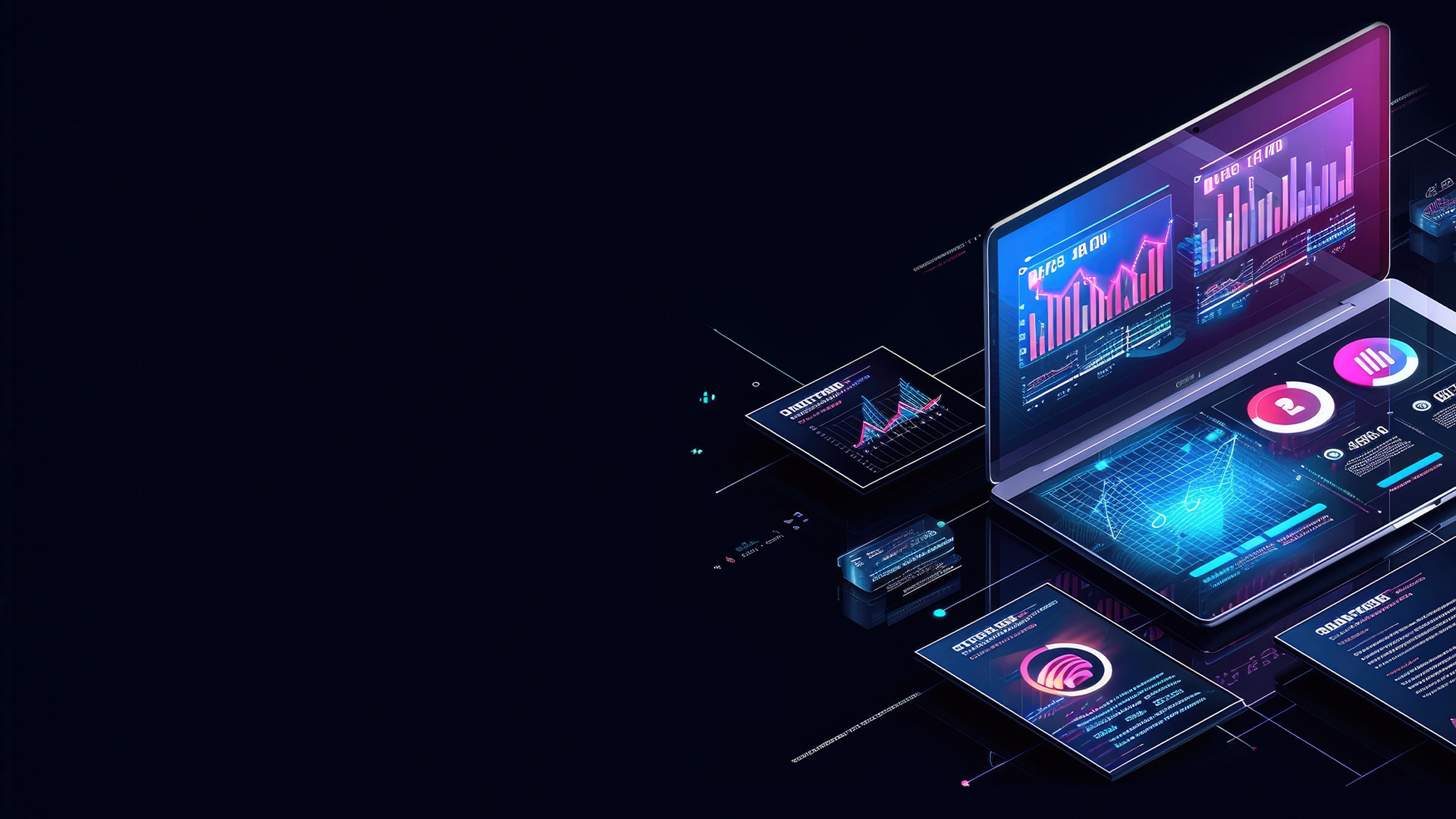What is an Analytics Dashboard & What are the Benefits?
We are currently in the age of information; more specifically, data. And while having all that data at our fingertips can help us make smarter decisions, it can also be quite overwhelming.
Today, 67% of Chief Marketing Officers (CMOs) admit they are overwhelmed by this data deluge. And while data analysts exist, it really is only a lucky few who work have access to them. For those who don’t have the benefit of a dedicated data analyst, an analytics dashboard tool is a great option.
What is an Analytics Dashboard?
Analytics dashboards are tools that aggregate and visually represent data from various sources, enabling users to monitor and analyze key metrics effectively. Basically, an analytics dashboard is a visual representation of key metrics.
Dashboards today integrate live data from numerous sources and offer AI-enhanced data processing, visualization, and interpretation. This means analytics dashboards convert raw data into actionable information, helping to boost your business performance.
When deciding what to include in an analytics dashboard, an organisation will identify a number of key performance indicators (KPI) that exist within their data. A KPI measures how effective an action is, whether departments are hitting their targets, and whether the business is meeting overall expectations. By focusing on the most important data for your business, your dashboard can give you a clearer big-picture view.
There are three main elements to consider when understanding an analytics dashboard:
- Data integration: combines data from various sources into a single, unified view. This helps track omnichannel KPIs that are crucial to a business and offers a complete perspective on company performance.
- Data visualization: represents information and data graphically to help identify patterns and trends. Visuals are generally easier to understand than complex numeric data, though some visualizations may require more literacy to interpret correctly.
- Business intelligence: uses software to turn data into actionable insights that drive business growth. BI software performs data integration and visualization, offering processed, analyzed, and visualized data. Modern BI software employs AI to provide smart suggestions and automate trend identification, closing the gap between average users and trained data analysts.
Types of analytics dashboard
Analytics dashboards are typically categorized into three types:
Strategic dashboards - “The forward-thinking dashboard”
Strategic dashboards help to plan long-term strategies by providing a big-picture look at performance. Clear visualizations make it easier to spot growth opportunities and flag issues that need attention. For instance, a CMO might use a strategic dashboard to forecast monthly marketing strategies and decide how to distribute budget across different channels.
Examples of metrics for strategic dashboards:
- Total monthly users
- Total leads-generated
- Total marketing qualified leads (MQLs)
- Cost per acquisition
- Conversion rate by marketing channel, e.g. organic SEO, social media, email marketing, paid advertising
- Total spend per marketing channel
A dashboard of this kind can be set to cover a longer period, for example, monthly, and may also include a metric to compare results to the previous period.
Key takeaways:
- Regular recurring updates, less-frequent than operational dashboards
- Monitor departmental KPIs and keep executives on track
- Understand the overall performance of the business and use data to set future goals
Operational dashboards - “The everyday dashboard”
Operational dashboards are best understood in terms of urgency; they often monitor data sets that are time-sensitive and record progress moment-to-moment. Operational dashboards alert managers to critical issues that must be addressed and allow them to take fast action.
In marketing, website performance is a great example. A website performance dashboard may include metrics such as:
- Real-time website traffic
- Bounce rate
- Top-performing landing pages
- New vs returning customers
- Customer conversion rates
- Daily revenue generated
- Top-performing channels
Monitoring these metrics ensures that direct action can be taken if any key areas are underperforming.
Key takeaways:
- Monitor day-to-day processes and performance
- Used for data that updates frequently (real-time, daily, weekly, etc.)
- Track progress towards a specific target
- Quickly identify critical performance issues
Analytical dashboards - “The deep-dive dashboard”
Analytical dashboards are the kind most commonly found in business intelligence tools. They are used by analysts to explore large data sets to identify trends, predict outcomes and help organizations make smarter decisions.
An analytical dashboard can be a valuable tool in various situations across different industries and departments. It allows users to monitor performance metrics in real time, providing insights into key performance indicators such as sales figures, customer engagement, or website traffic. Strategic planning can be guided by the high-level overview an analytical dashboard offers, helping organizations allocate budgets and resources effectively. Additionally, dashboards are useful for identifying trends and patterns, enabling quick adjustments to strategies when needed. They support forecasting and predictive analysis by examining historical data, which can be crucial for decisions like production scheduling or campaign launches.
When building an analytical dashboard, you may want to include the following metrics:
- Revenue: Track total revenue, revenue by channel, or revenue per customer.
- Conversion rate: Monitor how often visitors convert to customers across different channels.
- Customer acquisition cost (CAC): Calculate how much it costs to acquire a new customer.
- Customer lifetime value (CLV): Estimate the total value a customer brings over their relationship with your business.
- Return on investment (ROI): Measure the return on specific campaigns or initiatives.
Key takeaways:
- Large, historical data sets that update less frequently, e.g. quarterly or yearly
- Data drill-down and ad-hoc querying features
- Ability to modify data views with filters, date ranges, etc.
Why do you need an analytics dashboard?
Benefits of modern analytics dashboards
Dashboards are more than the static visualisations they once were (or still are if you use certain tools). The latest advancements come from AI. AI has revolutionized data analytics, bringing automation to complex data processes and surfacing insights that might otherwise go unnoticed. For example, Hurree uses AI for predictive analytics and automated data summaries, which saves time and enhances the accuracy of forecasts. This gives businesses a competitive advantage by anticipating market shifts and consumer behaviors ahead of time.
Using these modern dashboards with AI enhancements offers multiple benefits:
- Improved decision-making: AI's predictive features help businesses plan strategically for future scenarios.
- Real-time efficiency: Constant data updates allow businesses to swiftly adjust to operational changes.
- Customized reports: Dashboards can be tailored to focus on specific data points, transforming complex data sets into easy-to-understand visuals.
- Interactive data exploration: Modern dashboards offer interactive elements that make data exploration both informative and engaging.
Choosing the right dashboard for your needs
Choosing the right dashboard is crucial and should align with your business's or team’s specific objectives. For marketers, it's important to choose a dashboard that offers up-to-date insights and integrates seamlessly with other data tools. Look for a dashboard that scales with your business and is easy to use, ensuring all stakeholders can leverage it without a steep learning curve.
Summing up
Analytics dashboards offer a powerful resource for organizations lacking the skills, time, or manpower to manually handle data. In this blog, we covered the basics of analytics dashboards and how marketing teams use them to gain insights and shape strategies. But it's not just marketers who benefit - departments like sales, HR, and finance can all use dashboards to clearly see and understand their data.
Empower your teams to focus on the most important data, use impactful visualizations for instant insights, and make data accessible to even the least tech-savvy team members. Dashboards enable quicker, more precise decisions, putting you in control of your data.
Get started with your free trial of Hurree today and discover how to truly harness the power of analytics and transform your company reporting using cross-platform dashboards. If you have any questions then feel free to reach out to contact@hurree.co, we'd be happy to answer them!
Share this
You May Also Like
These Related Stories

[Infographic] What are Analytics Dashboards?

What Should You Include in a Marketing Dashboard?



